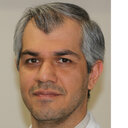Cytotoxic activities of phytochemicals from Ferula species.
Ключевые слова
абстрактный
BACKGROUND
Ferula species are reputed in folk medicine for the treatment of a variety of disorders. There have been sporadic reports on the chemopreventive and chemosensitizing activities of some terpenoid coumarin derivatives from the genus Ferula. The present study investigated the cytotoxic activity of 11 phytochemicals (conferone, farnesiferol A, acantrifoside E, mogoltadone, diversin, galbanic acid, herniarin, 7-isopentenyloxycoumarin, umbelliprenin, stylosin and tschimgine) from Ferula species together with a newly synthesized prenylated derivative of curcumin (gercumin II).
METHODS
Cytotoxic activity of phytochemicals was evaluated against ovarian carcinoma (CH1), lung cancer (A549) and melanoma (SK-MEL-28) cell lines using MTT assay.
CONCLUSIONS
Overall, moderate cytotoxic activity was observed from the tested compounds with IC50 values in the micromolar range. The highest activity against CH1 and A549 lines was from conferone while stylosin and tschimgine were the most potent compounds against SK-MEL-28 line. In conclusion, the findings of the present investigation did not support a potent cytotoxic activity of the tested phytochemicals against CH1, A549 and SK-MEL-28 cell lines. With respect to previous reports, the beneficial impact of these phytochemicals in cancer therapy may be more attributable to their chemopreventive or chemosensitizing activity rather than direct cytotoxic effects.


